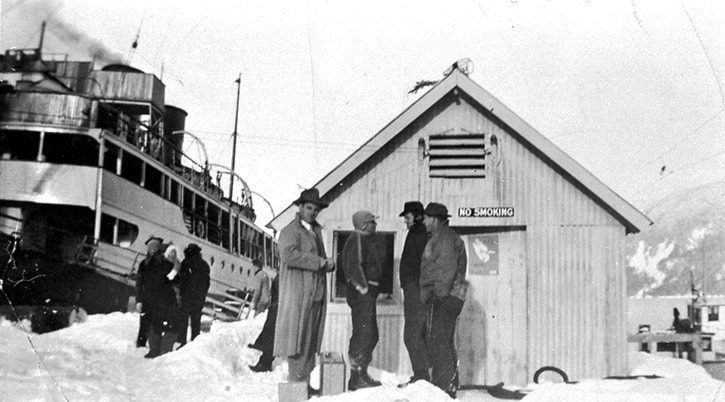By Catherine Gilbert
The Thurlow Islands east of Campbell River are made up of two islands known today as East and West Thurlow.
When Captain Vancouver first explored the area in 1792, it was thought that the two islands were one land mass. He named his discovery after Lord Thurlow, an Englishman who was promoted to his status as a lord instead of being born to it – an anomaly in that era.
Both Vancouver in the Discovery, and Captains Galiano and Valdes in the Sutil and Mexicana, sailing north on Cordero Channel, were able to ascertain that the waterways around the Thurlows lead to Johnstone Strait and hence to the open sea.
When the explorers first passed through, there were a number of native Kwakwaka’wakw villages in the area, and even now, trading beads can sometimes be found on beaches where the villages were located. Although members of the original bands moved further south, their descendants still maintain traditional territories throughout.
East Thurlow is bounded by Nodales Channel on the south side, Cordero Channel on the east and Mayne Passage on the north; the passage which separates it from West Thurlow. Its settlement and industrial history dates back to 1880, when Hastings Sawmill out of Langley, BC, seeking easily accessible timber, set up headquarters at Bickley Bay.
Just four years later, gold was discovered in Shoal Bay on the east side of the island and East Thurlow became a destination for prospectors. The tiny settlement grew rapidly and by 1897, Shoal Bay had two stores and two hotels and an estimated population of 1,500.
In that same year, it was incorporated as a town and plans were drawn up for a townsite. Union Steamships from Vancouver stopped by four times a week, making the town a veritable hub for those who lived in the region, and these nearby residents would row over to pick up mail and supplies brought by the ships.
By 1913, a school was opened, the government dock was built and a telephone line was run from Shoal Bay to the forestry station at Thurston Bay on Sonora Island and to Rock Bay on Vancouver Island.
It was a promising beginning. However, once mining dwindled, Shoal Bay went the way of so many gold rush communities and the townsite was never developed. The iconic store was dismantled in 2008 and what remains today is a privately-owned lodge, a few seasonal residences and the government dock now utilized by pleasure boaters.
Logging activity continued in the surrounding area after Shoal Bay’s boom, as did fishing. On West Thurlow Island, Blind Channel was the centre of activity, and a sawmill was built there in 1910. By 1918, that was replaced by a cannery.
In his book “The Way it Was” Len Crawford describes a period in the 1940s when his family ran a logging operation at Blind Channel, and there was plenty of activity and social interaction with nearby residents. The Union Steamships stopped there as well, and just as at Shoal Bay, people would row over to meet the boat.
But work and people were transient in that area; as more activity moved westward to Vancouver Island and the Union Steamships stopped running in 1958, a whole coastal way of life virtually ceased. In “Guide to Blind Channel,” Phil Richter says, “The visitor to the area today might find it difficult to imagine the activity which existed here within less than one lifetime.”
Phil Richter’s parents Edgar and Annemarie purchased the property and existing store at Blind Channel in 1970, when the area showed promise of attracting recreational business. They developed the location into a thriving resort, complete with a first class dining room, general store with a liquor licence and post office; washroom and laundry facilities, and moorage and fuel for boats. Phil and his wife Jennifer took over when the parents retired; their son Elliot assists with operations and now a fourth generation is being raised there.
With industry gone, the Thurlows and surrounding area are enjoyed today for their exceptional beauty and excellent fishing, and seasonal residents and boaters congregate at Blind Channel and Shoal Bay for social occasions, just as their forebears did only a few decades ago.
For more local history, visit www.crmuseum.ca
